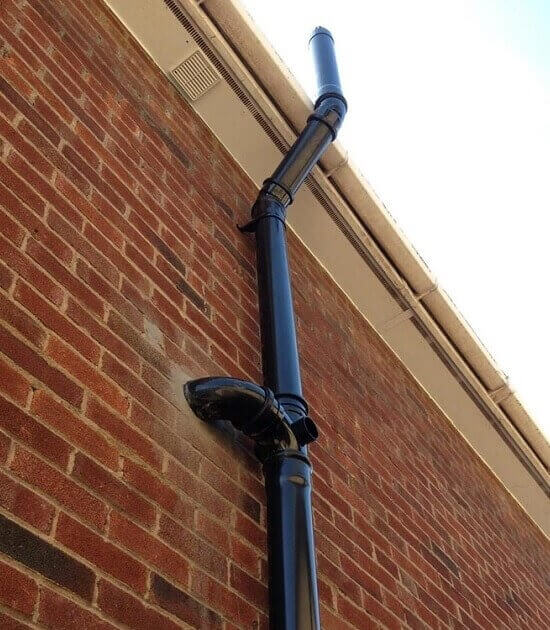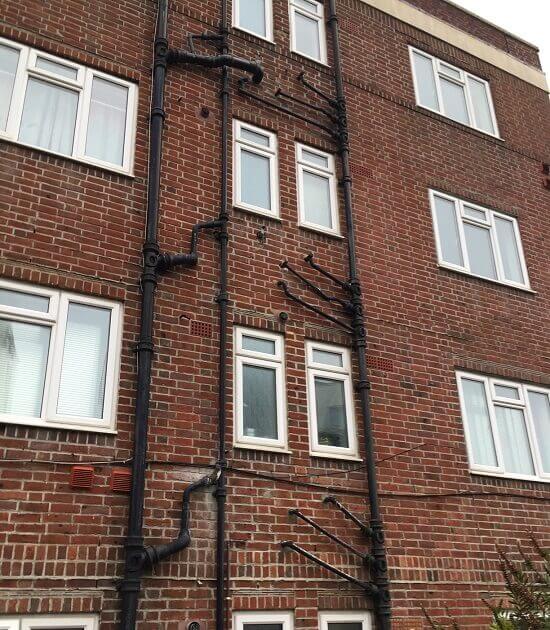Venting A Soil Pipe And When To Use Vent Pipes

In this article, we'll explain how and where a soil pipe is traditionally used as a vent pipe, and what alternatives can be installed to avoid the need for a vent pipe if required.
What Does The Vent Pipe Do?
The main purpose of a soil vent pipe is to regulate pressure in the drainage system. Under normal circumstances, the air inside a drain is at atmospheric or neutral pressure. A sudden flow of water inside the pipe (for example when a WC is flushed) creates a positive pressure in front of the flow and a negative pressure behind it.
Positive pressure downstream can, in extreme circumstances, push waste water back through the traps and into the appliance, causing a health hazard. However, this is only really an issue in the high block of flats and is usually avoided by using long radius bends at the foot of the soil pipe to enable a healthy flow of wastewater to be maintained.
Negative pressure - a much more common problem - will cause the water seal in a trap to be sucked out, allowing drain smells to enter the house through the empty trap. This happens when the flow of water from a WC creates a siphoning effect behind it. Vent pipes stop these problems from occurring by allowing air to be drawn into the pipe, breaking up the siphon and balancing the drain pressures.
| VENT PIPE | SOIL PIPES & WASTE PIPES |
 |
 |
Does The Vent Pipe Need To Finish Above The Eaves
Regulations state that soil vent pipes that are situated within 3m of an opening window must terminate at least 900mm above the eaves. On a two-storey building that generally means that the open end of the pipe will be above the level of the eaves. One way to avoid such a high-level installation is to use an External Air Admittance Valve at the top of the pipe, which allows air to be drawn in to balance any negative pressure but does not let out any foul gases - it is essentially a one-way valve.
If you would like to find out more about these useful soil pipe fittings, check out our guide on the use of Air Admittance Valves.
Is The Vent Pipe Different From A Normal Soil Pipe
It differs in name only. The term "Vent Pipe" refers to the part of the soil system that is above the highest wet point on the system - the highest point in which water can flow under normal circumstances. The pipe itself is exactly the same, as are all of the fittings and joints.
We stock the Floplast range of soil pipes and fittings; the whole system is manufactured in high-quality UPVC and is British Standard Kitemarked. Other terms commonly used include toilet vent pipe and drain waste vent.
Is There A Choice Of Colours
Soil and Vent Pipe is in stock and available in different colours - black (ring seal), black (solvent weld), grey, olive grey, anthracite grey, cast iron rffect, and white. Black is generally the most popular colour for external use and white is very popular internally.
What Happens If The Vent Pipe Becomes Blocked
If the soil pipe vent is blocked, the air pressure inside it cannot be regulated. This will create induced siphonage brought about by negative air pressure within the soil or 110mm drainage pipe when there is a water flow within the system, causing the waste trap seals to fail. This manifests itself by drain odours entering the bathroom or kitchen via the empty traps, or by air bubbles in the WC pan when the cistern is flushed.
Blockages in the vent pipe are almost always caused by nesting birds. You can prevent this from happening by installing a vent terminal on top of the pipe. A Vent Terminal is an inexpensive cage-type fitting that stops birds from entering the pipe.
Installing your own? Our soil stack set contains the basic products to build or replace a soil stack.











